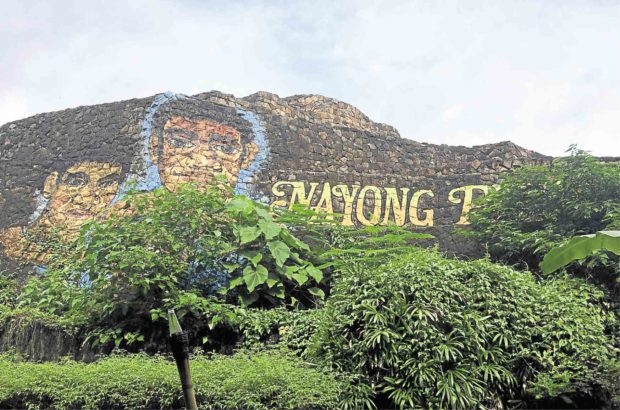
OPENING SOON Rehabilitation work is ongoing at Nayong Pilipino in Clark Freeport as its officials prepare to reopen the cultural and heritage park in October. —TONETTE OREJAS
CLARK FREEPORT—Inside the Nayong Pilipino here, workers are sprucing up the cultural theme park in time for its reopening in October. Outside, a large billboard tries to stir excitement, declaring that the once popular government-controlled park is now under renovation.
The facelift, or rehabilitation as officials are quick to point out, comes when the country is hosting the 30th Southeast Asian Games in November inside Clark and at New Clark City, nearly 15 kilometers north of this free port.
Whether the revival is events-based or long-term, Nayong Pilipino deserves it, according to Michelle Aguilar-Ong, executive director of Nayong Pilipino Foundation.
“It is the only cultural and heritage park in the country,” Ong says. “The idea is to rekindle appreciation and love from every generation about who we are as Filipinos.”
“The concept of a miniature Philippines is to present most of the top destinations in one setting, making it a must-visit attraction for those having limited length of stay,” she says.
The park is similar to Indonesia’s Taman Mini that draws in a lot of visitors.
Counting the 32 years it existed in Pasay City from 1970 to 2002 and the 13 years it has operated inside the Centennial Expo here since 2006, Nayong Pilipino is 45 years old.
Unique park
Ong says there is nothing quite like Nayong Pilipino. “We have heritage sites, green parks all over the country but this celebrates all about being a Filipino in one venue.”
The original park featured the Ilocos, Cordillera, Southern Tagalog and Bicol regions, as well as those in the Visayas and Mindanao.
In Clark, replicas of the Ifugao rice terraces; Barasoain Church in Malolos City, Bulacan; and the house of national hero Dr. Jose Rizal have been retained.
Rebuilding Nayong Pilipino in Metro Manila is not possible soon. From having 45.9 hectares, it is left with only 15 ha as much of the properties were taken by the government, allocating these instead for two new passenger terminals and a cargo facility of its neighbor, Ninoy Aquino International Airport.
The 15-ha lot is in Entertainment City in Parañaque City.
Bigger crowd
Clark, Ong says, makes Nayong Pilipino accessible to a bigger crowd through many projects that are ongoing or underway.
Clark is being propped up as an alternate international gateway which will improve connectivity to the north and spur tourism and investments to the North Luzon growth corridor.
One with huge tourism impact will be the Clark International Airport, a huge regional improvement initiative which will incorporate the development of rail infrastructure projects, including the Manila-Clark high speed railway and the Subic-Clark cargo railway, to connect the airport to city centers.
“Then there is the upcoming 30th SEA Games, an opportunity to show global visitors what Philippines is all about in one quick look,” Ong says.
No subsidy
Nayong Pilipino Foundation, which is attached to the Department of Tourism, gets no government subsidy. Ong says the park subsists on its own, able to earn more or less P50 million a year.
Before its temporary closure in April, Nayong Pilipino drew in 30 to 40 busloads of students on educational trips daily.
In Clark, the 5.35-ha park is run as joint venture with the state-owned Clark Development Corp., which gets 15 percent of gross income.
According to Ong, visitors and tourists contribute a substantial part of the annual operations budget. A small portion comes from the property investment, she says.
“The foundation makes it a point that it will serve largely in the promotion of culture and heritage,” Ong says.
Keeping culture alive
These efforts to revive Nayong Pilipino in Clark, she says, come from a “constant need to keep the culture and heritage alive in every Filipino’s consciousness, may he or she be young or old.”
Ong gives only a peek of the rehabilitation. The budget indicates the scale is not massive, though.
“The park is paced to make sure that every visitor who comes in will have a unique cultural experience that no other theme parks could offer,” she says, adding:
“We have created a team to ensure that programs and performances are well-crafted, appropriately choreographed and 100-percent Filipino made.”